Learning Objectives:
• Learn how to create smooth and gradual variations of tone when shading
• Understand how different weights of pencil can influence how light/dark and soft/hard pencils can be and how your choice of pencil might influence your shading
• Learn how to neaten and refine work as it progresses
• Understand how different weights of pencil can influence how light/dark and soft/hard pencils can be and how your choice of pencil might influence your shading
• Learn how to neaten and refine work as it progresses
Introduction
Today we’re learning how to create tonal gradients with a pencil – smooth changes from light to dark. Gradients are what make a flat shape look rounded, shiny, or three-dimensional.
You’ll practise controlling your pencil to go from the lightest grey to the deepest black, and everything in between. Soon, you’ll see how shading can bring real depth and realism to your drawings.
What you will need:
• Sketching paper (or your sketchbook)
• Drawing pencils
• Ruler
• Eraser
• Pencil sharpener
• Blending stumps (optional)
• Drawing pencils
• Ruler
• Eraser
• Pencil sharpener
• Blending stumps (optional)
Tips for shading effectively:
Your Task (Part 1):
For this exercise you will need to draw two long boxes on your page and shade them from dark to light from one end to the other. In the first one, a stepped gradient takes you
Extension task:
To the right is an example of both tonal scales completed.
For a challenge, have a go at creating a stepped gradient with more steps to the video above and a smooth gradient that shows a wider range of tones.
Your Task (Part 2):
Once you have mastered shading linear gradients, have a go at creating a spherical gradient. The video below shows you how.
Further Extension Task:
Practise drawing some of the gradients from the image below. If you would prefer to use the template on the right you can download it, print it and trace it. However, you can draw them by hand if you wish.
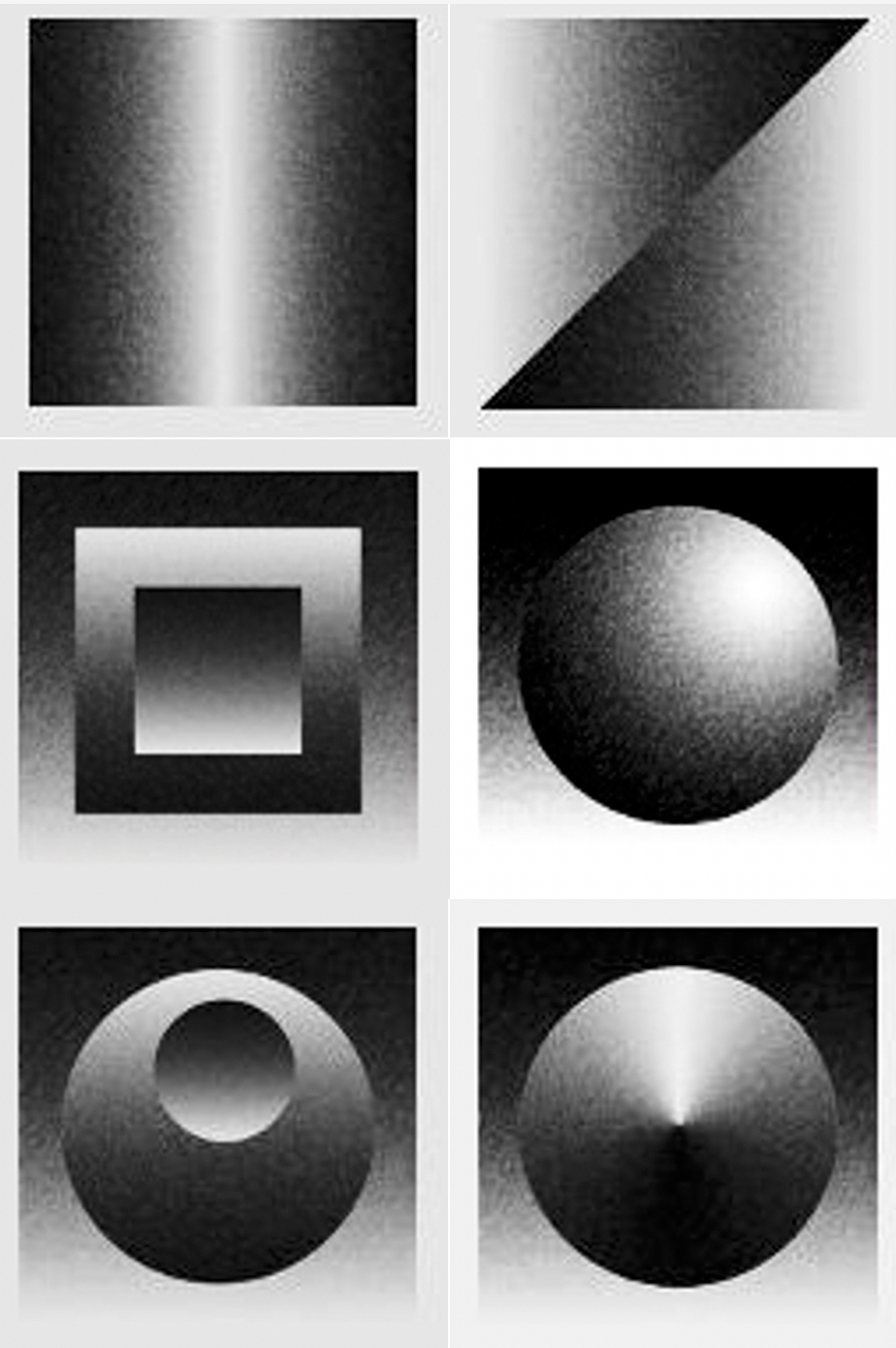
Advanced Gradients
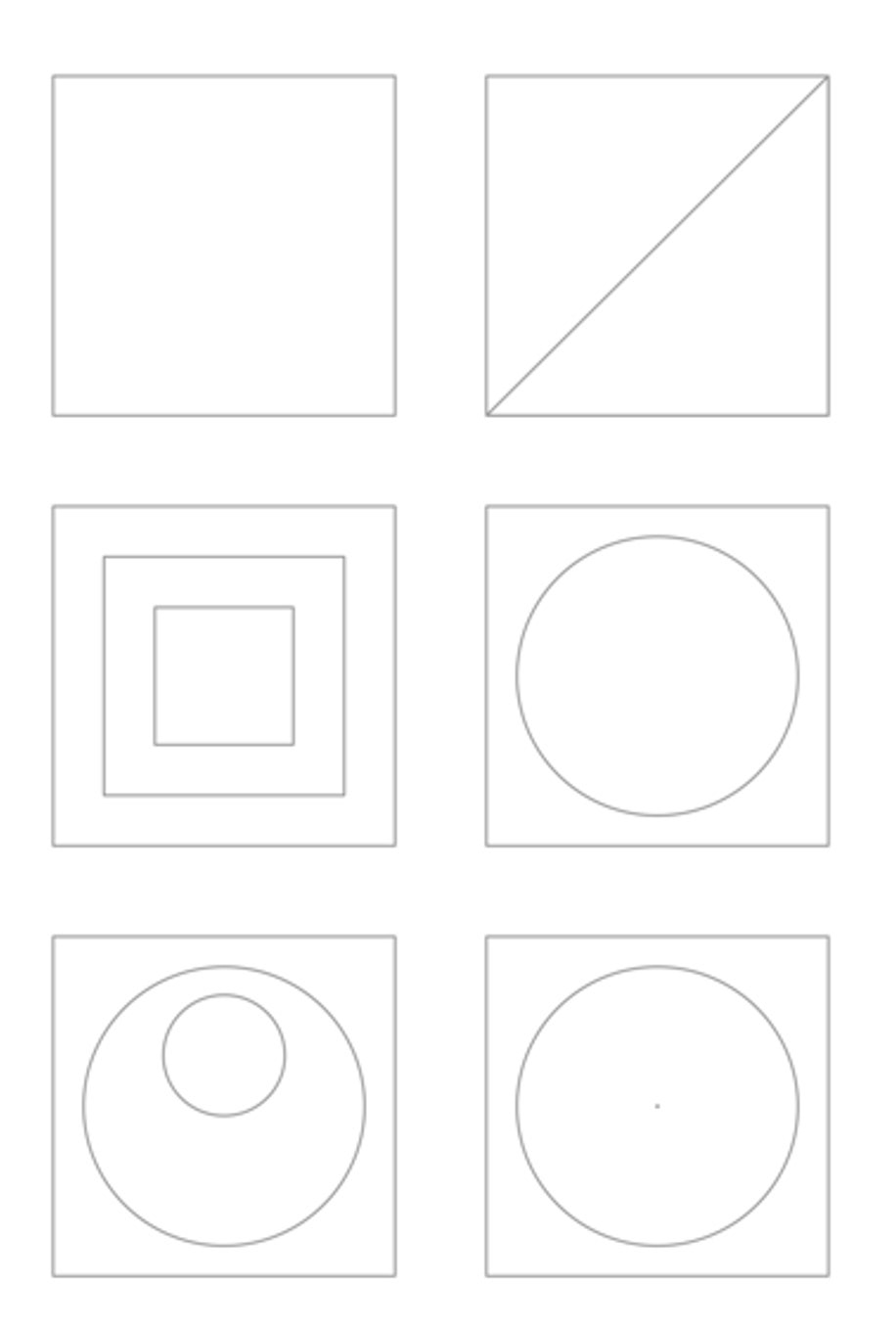
Template
Top Tips
• Keep your pencil sharp and hold it at a shallow angle when shading
• Layer up your shading gradually, starting with the lightest tones
• Smudge your shading between layers, but be careful not to smudge out of the area you are working on
• Don't smudge so much that the shadows and highlights become a similar shade of grey
• Rest your wrist on a piece of scrap paper to prevent unwanted smudging
• Layer up your shading gradually, starting with the lightest tones
• Smudge your shading between layers, but be careful not to smudge out of the area you are working on
• Don't smudge so much that the shadows and highlights become a similar shade of grey
• Rest your wrist on a piece of scrap paper to prevent unwanted smudging
Examples of previous students' tonal shading exercises:
What do you think has gone well in these examples and what might you do better in yours?
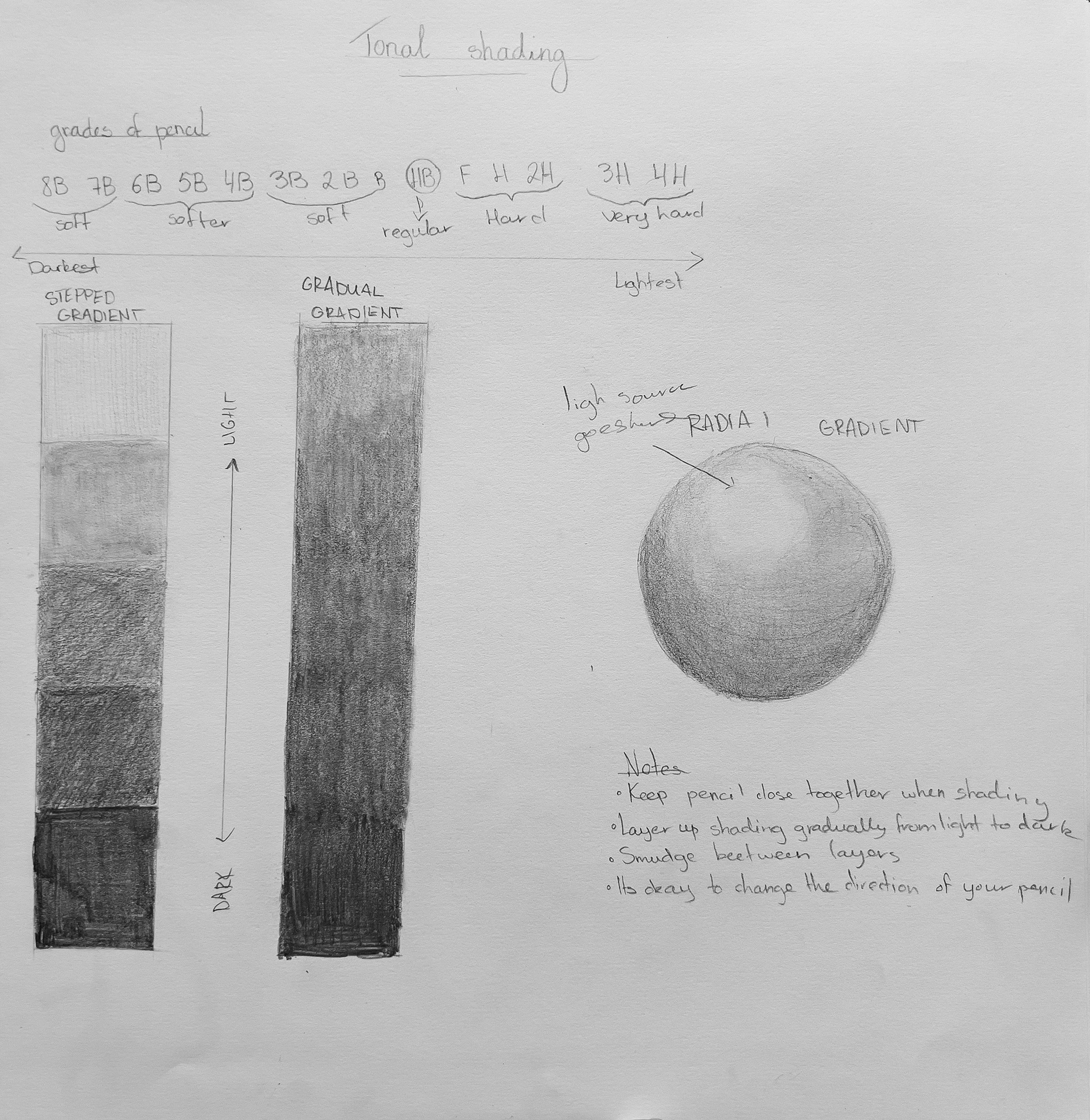
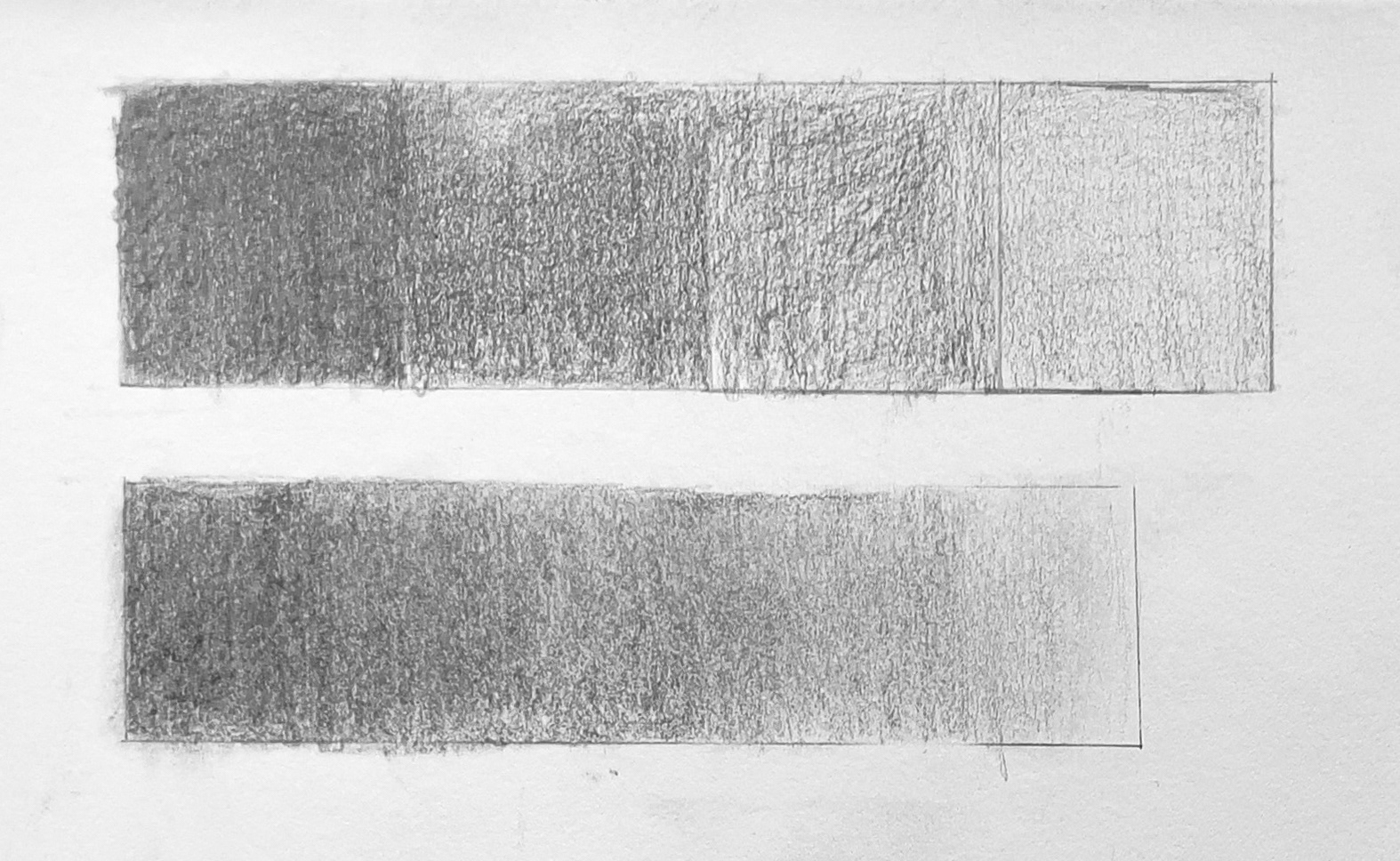
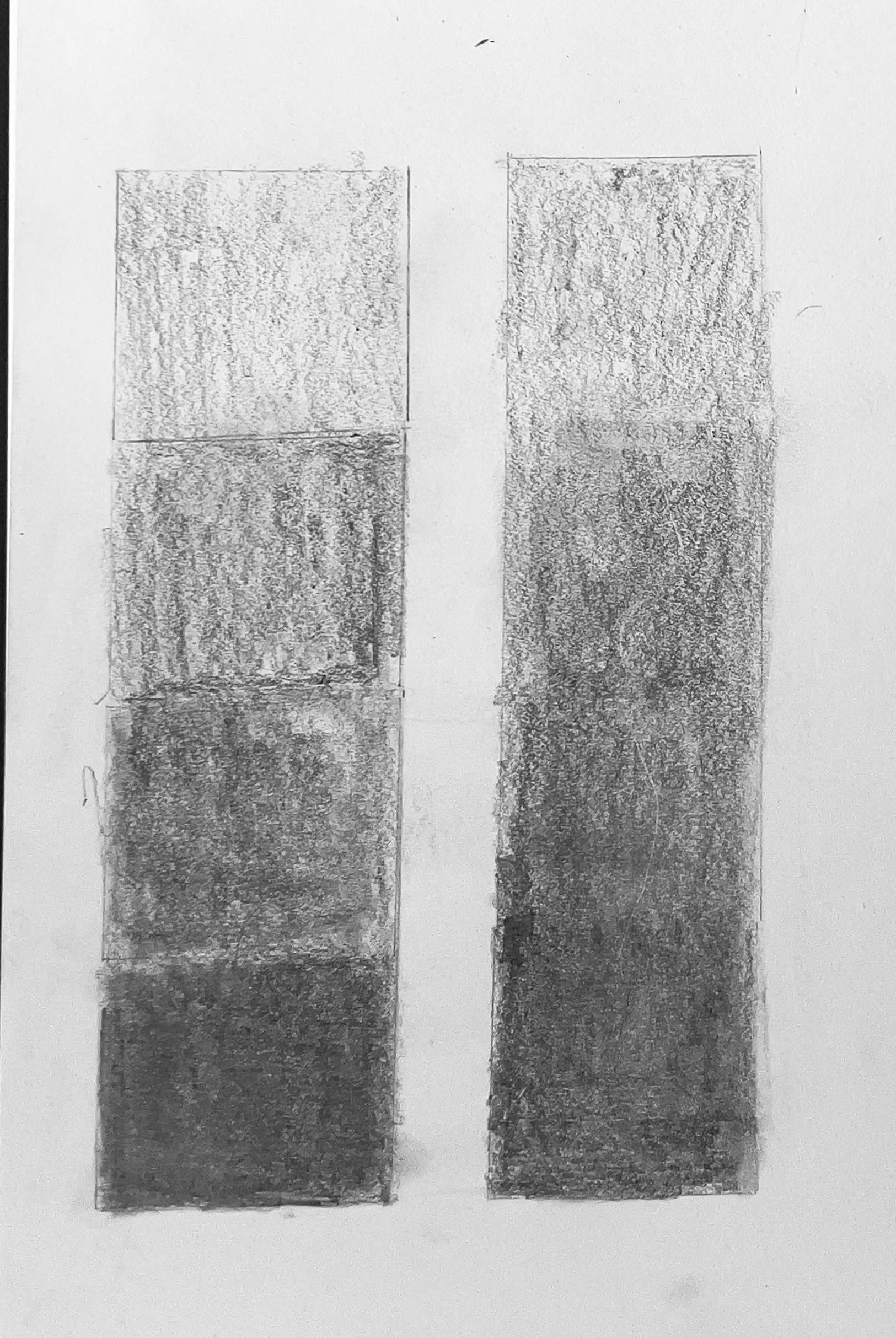
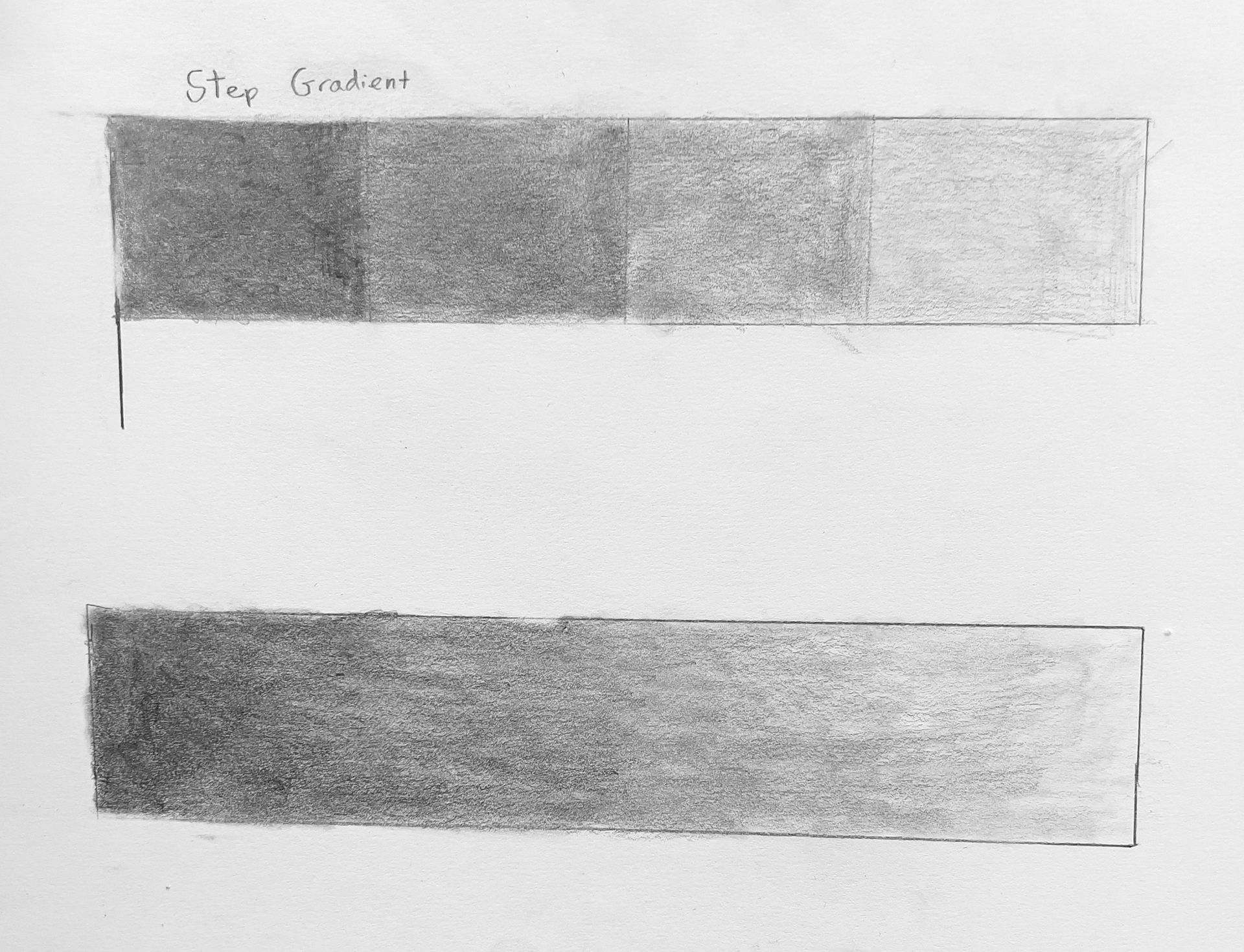
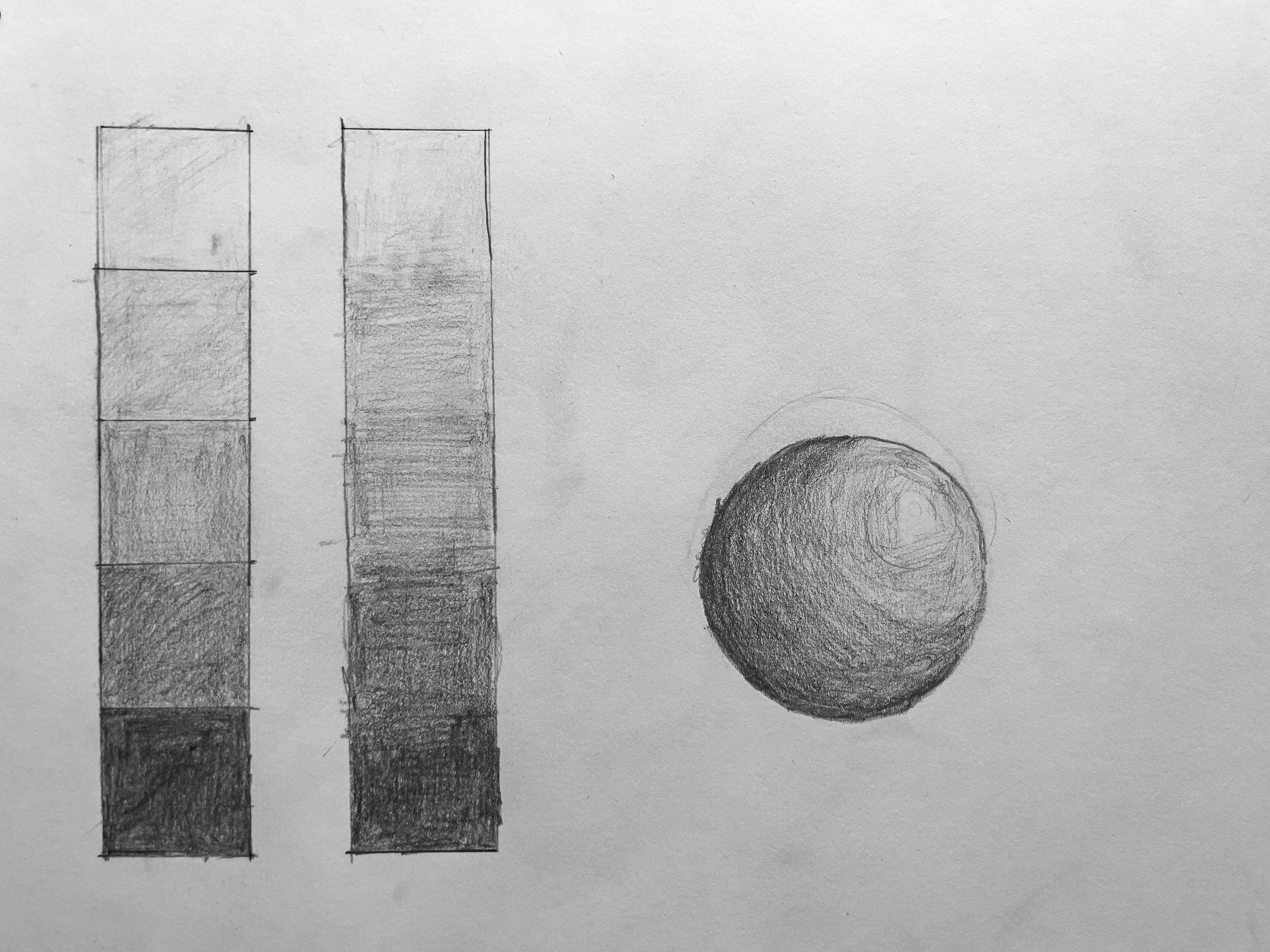
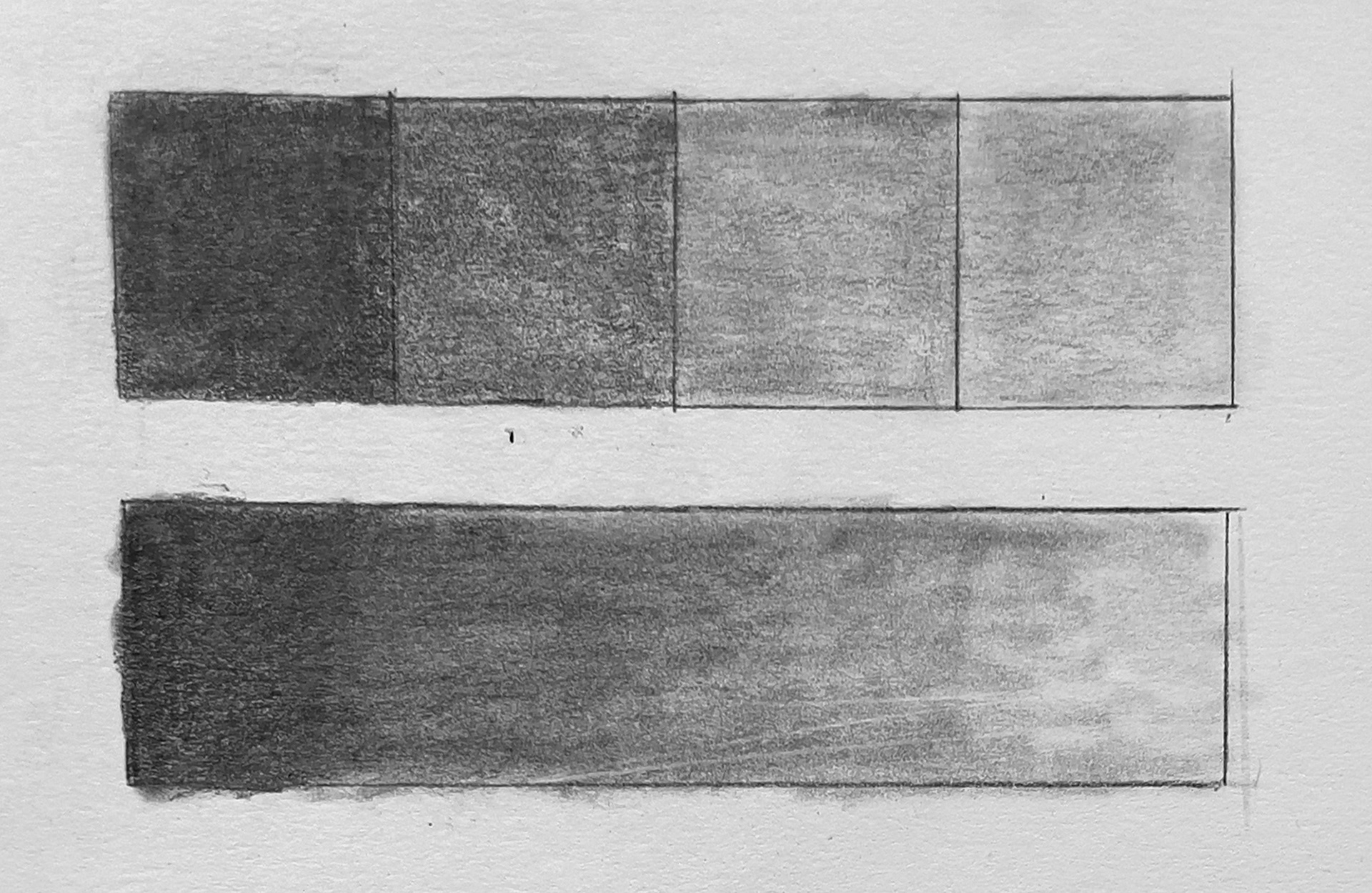
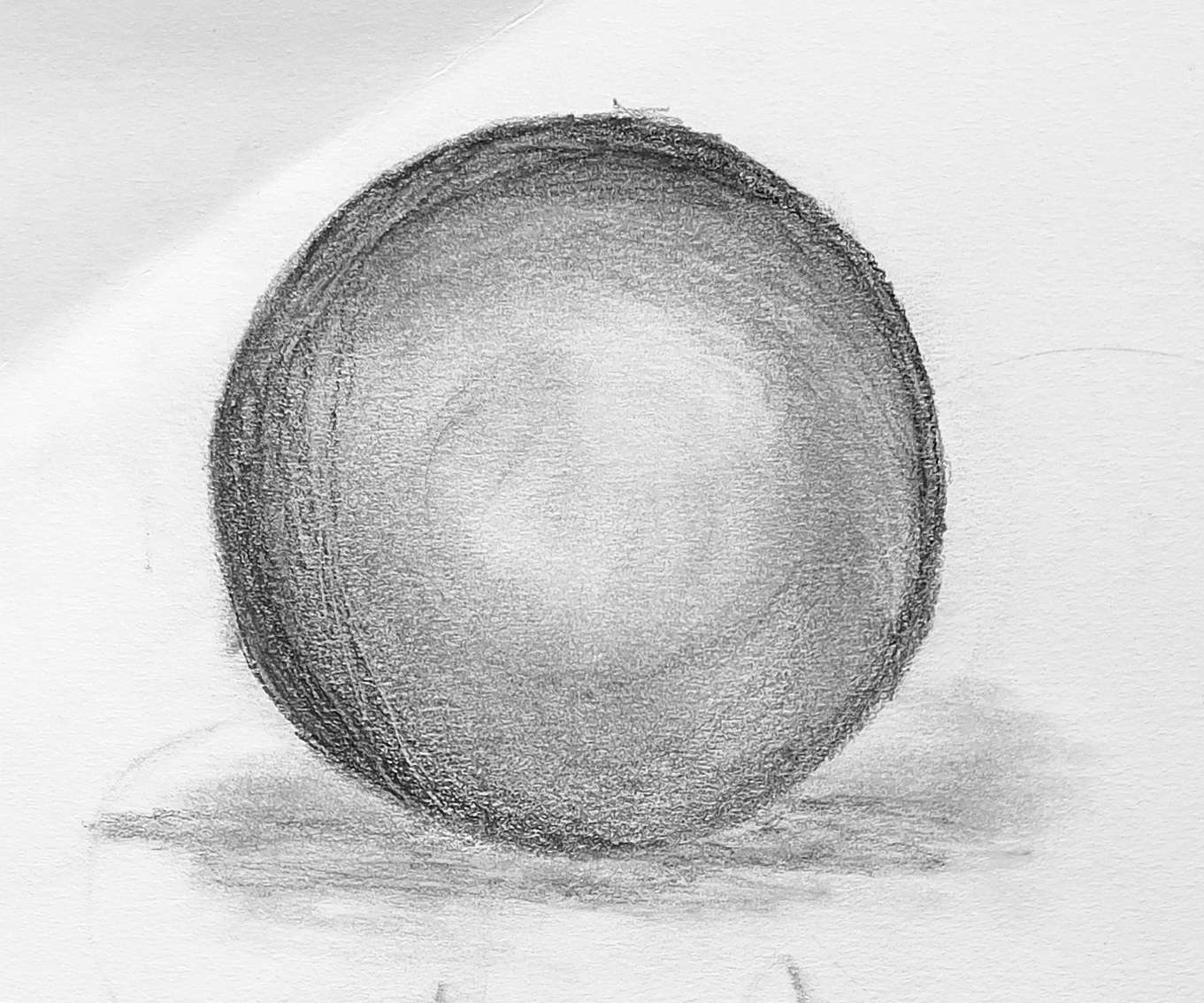
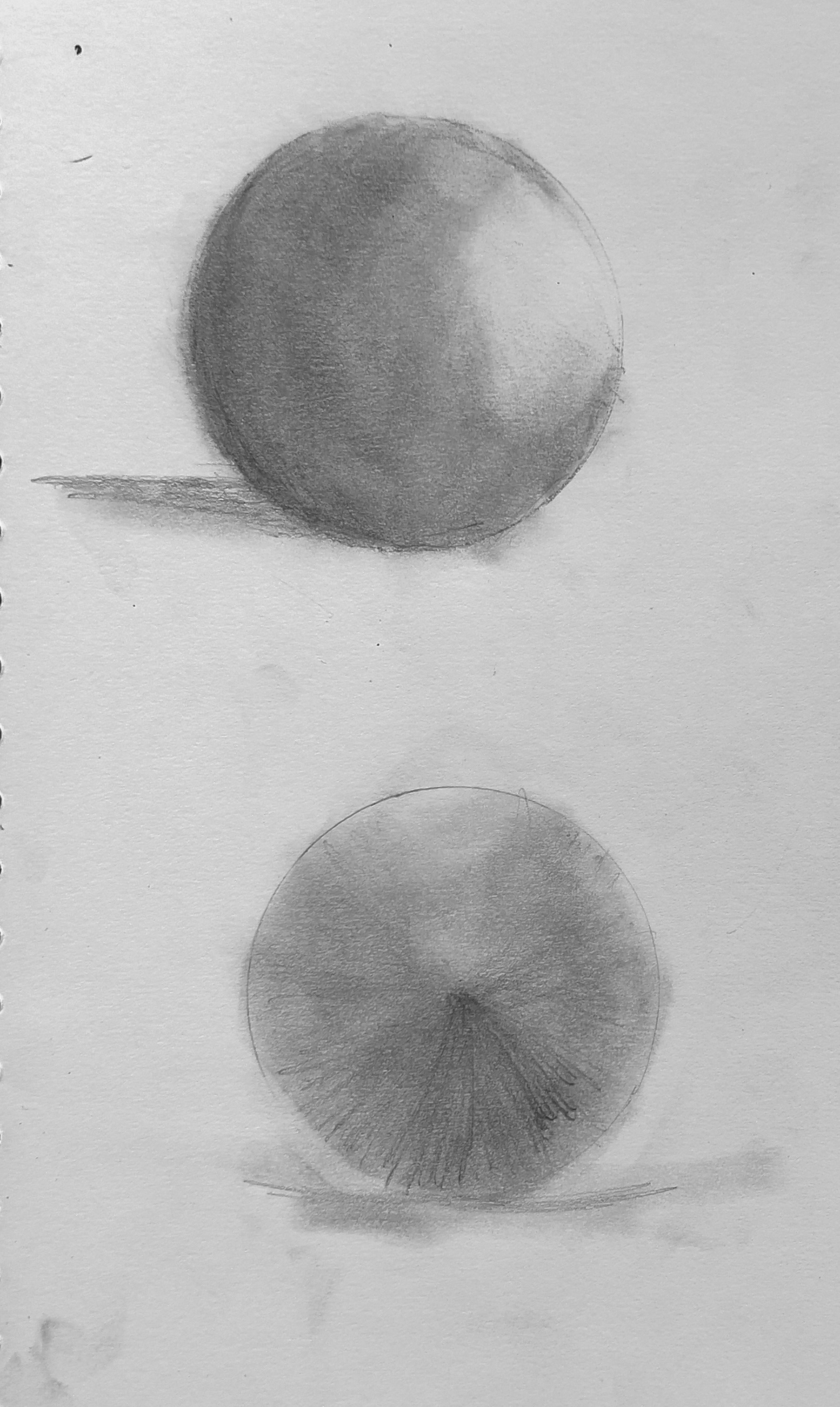
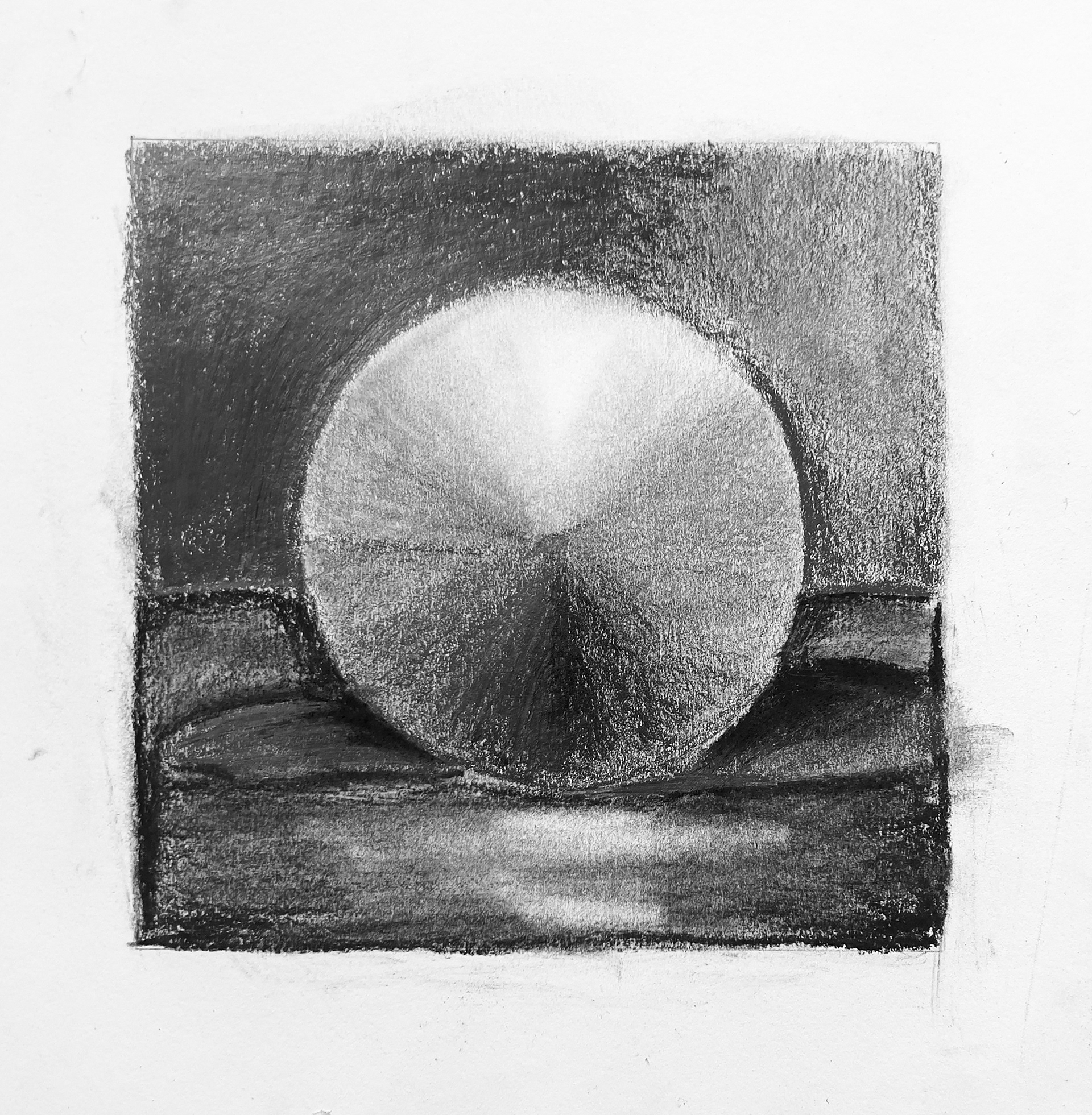
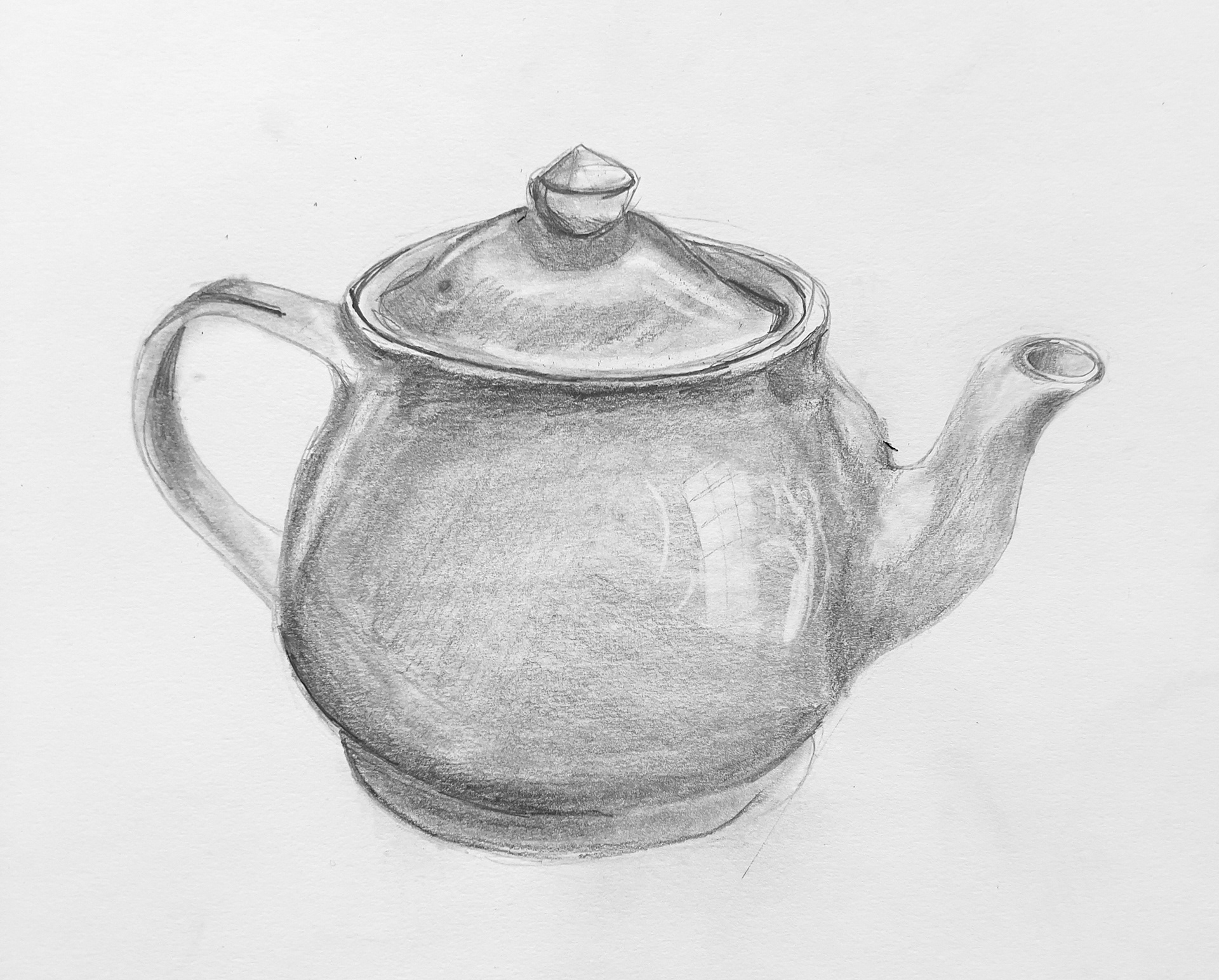
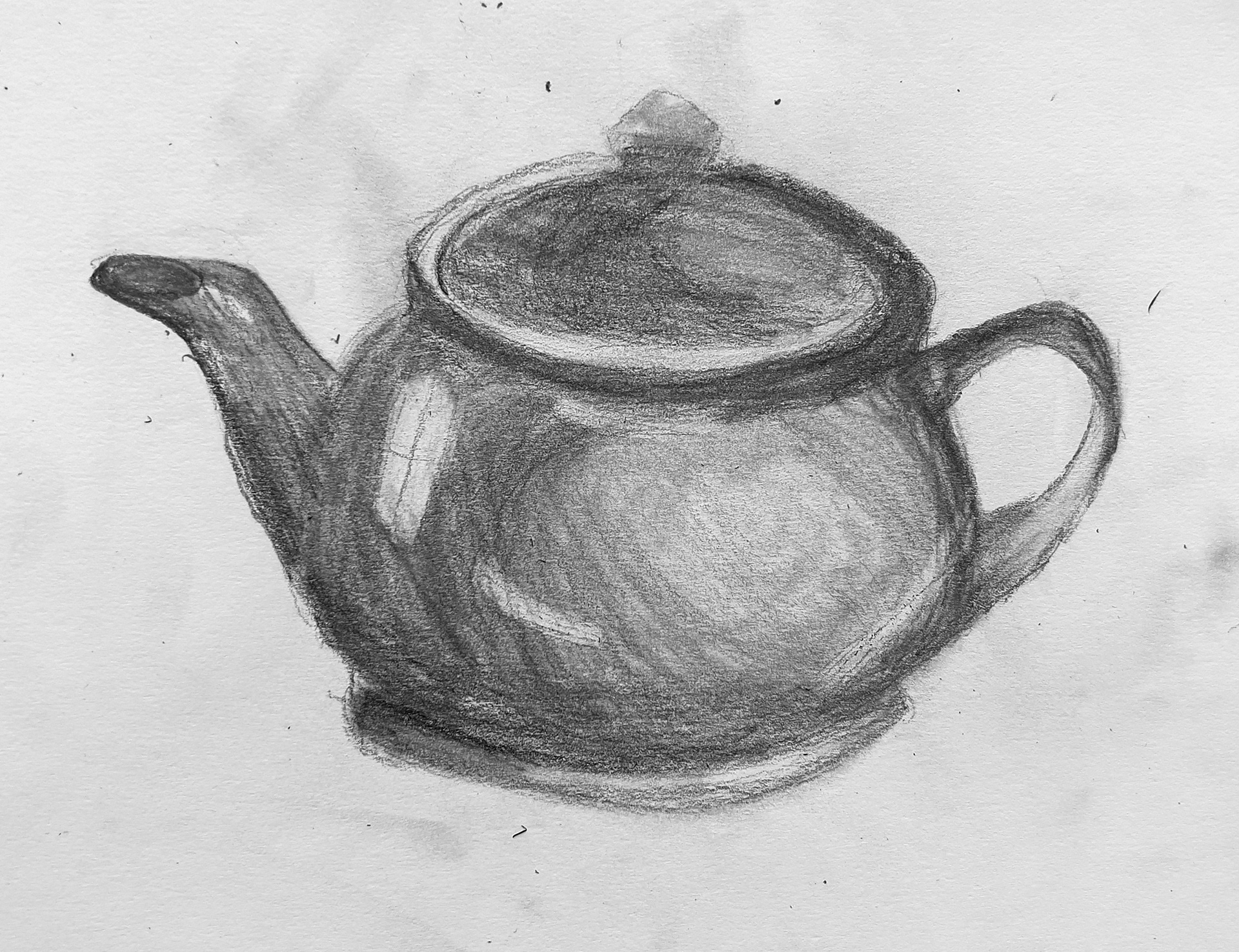
What tends to go wrong?
Here are the top 5 common mistakes when learning tonal shading, and some advice to avoid them:
Stripey shading
– Change the pressure of your hand gradually to avoid bands of light and dark.
– Change the pressure of your hand gradually to avoid bands of light and dark.
Heavy hand
– Layer up gradually to form the shadows. Pushing too hard, too quickly, can look patchy.
– Layer up gradually to form the shadows. Pushing too hard, too quickly, can look patchy.
Smudge overload
– Rubbing too much makes it messy or shiny. Try to get it as smooth as you can without smudging.
– Rubbing too much makes it messy or shiny. Try to get it as smooth as you can without smudging.
Not dark enough
– Create a strong contrast between your lights and your darks to prevent it from looking flat.
– Create a strong contrast between your lights and your darks to prevent it from looking flat.
Scratchy lines
– If your pencil is too sharp, or you hold it at a very steep angle, it can make your shading appear scratchy. The more horizontal your pencil, the better!
– If your pencil is too sharp, or you hold it at a very steep angle, it can make your shading appear scratchy. The more horizontal your pencil, the better!